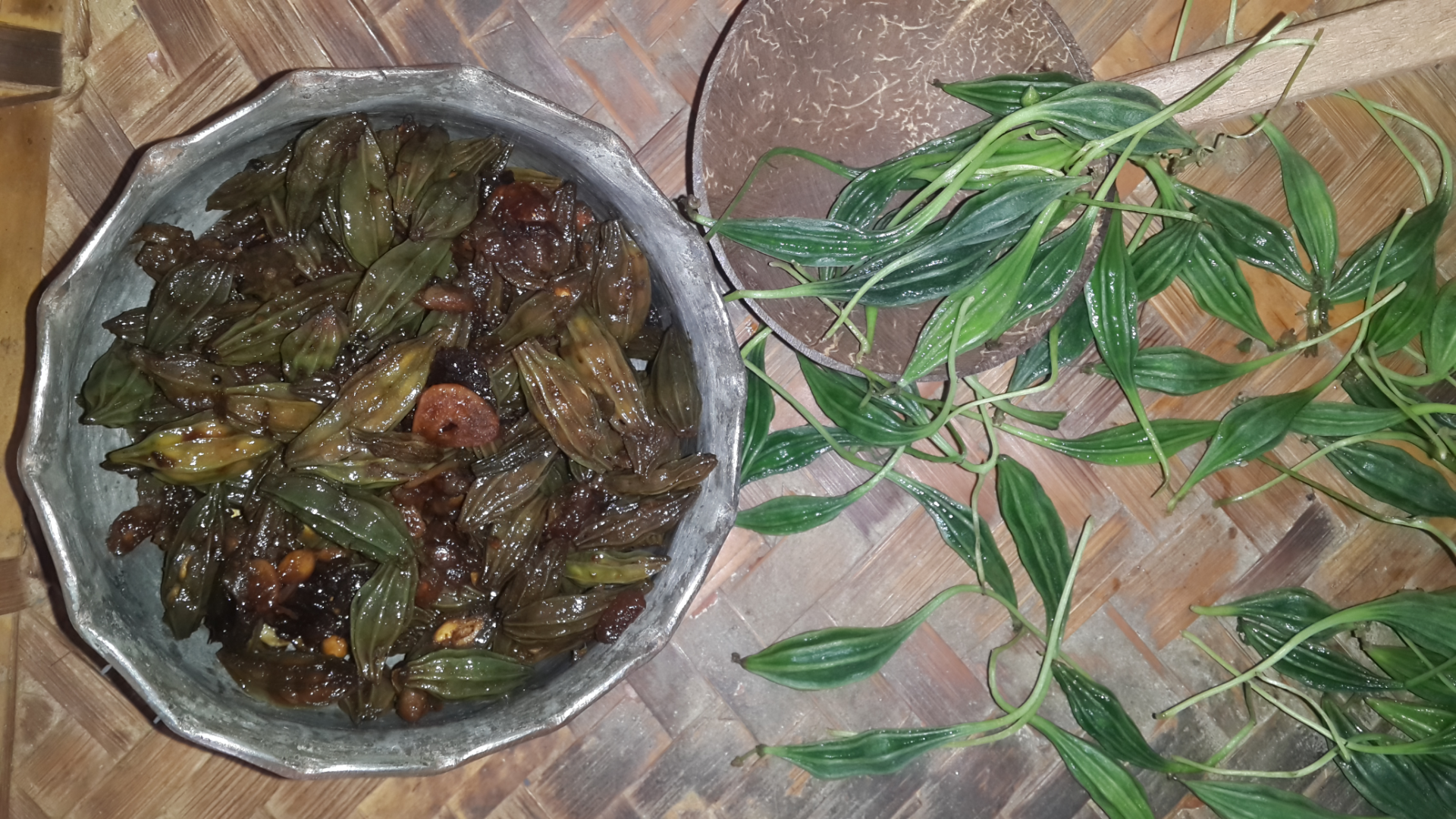The Adhalakkai
Most of us can identify an olive, a caper or even a raspberry. But, mention adhalakkai and most folks go, “Huh? What’s that?” My aunt Mallika sent me some adhalakkai recently, and my help at home thought they were baby bittergourds. I was utterly dismayed and I decided to write about this. It is sad that people are moving away from food that traditionally grows in our environment and that is healthy and nutritious. This vegetable that is so obscure now is good for health and affordable by everyone. It is sad that we eat all vegetables throughout the year. There is no concept of the seasonal.
Do we need to stop teaching our kids to appreciate the goodness of a rain-fed keerai and focus only on the health quotient of say, the carrot? Not at all. We must learn to look around and relearn food that is close to us.
When we see famous chefs talk about wild mushroom and black currants freshly picked from the woods, we are full of wonder and envy. We want to feast on those kinds of natural ingredients. Rene Redzepi of Noma only cooks food that is grown in his area. He rustles up the most amazing wild greens and herbs and cooks them with a deep sense of respect. That is something we all could do easily.
We are also surrounded by a wealth of seasonal produce. There was a time when we ate only seasonal stuff. We lived off the bountiful land. Foraging for vegetables, fruits and grains contributed to a robustness in health and well being. The adhalakkai is one such an example of a local wild vegetable.
I have eaten this vegetable, not very often, but enough to be impressed by it. The dark green thick outer covering softens when cooked just enough to offer the slightest resistance on biting. That soon gives way to a mouthful of crackle when the seeds burst forth and release the juices which add a bitter aftertaste. For those who were introduced to such dishes from a young age, it was a lesson that the bitterness was something to be appreciated as much as the sweet and the salty. It is an acquired taste. It is never too late to expand one’s flavour bank, especially when it does wonders for health. The adhalakkai was used to prepare a tonic for diabetics. It helped the body balance the excess of sugar in the system. It packs a lot in its petite form and its taste is so intense that just a little of it goes a long way.
This small ridged deep green vegetable has a long stalk and resembles the bittergourd in looks and taste. And because of this I cook it always with a little bit of tamarind, jaggery and lots of garlic. My kids actually love it and I am always happy when they eat it with such gusto. However, I am told that adhalakkai is not traditionally cooked with jaggery. Mrs. Sunitha Santhanam who still enjoys cooking traditional fare told me this. She reminisces about a time when this crop grew in wild abandon during the cooler months, especially in Virugalpatti. It apparently hibernates the rest of the year. She laments the fact that these plants do not grow wild anymore because of the excessive use of pesticide.
Theni is one place, she says, where this vegetable is still available from time to time. Vegetable vendors here endorse this.
The Theni variety differ in size, colour and bitterness from the ones that used to grow around Coimbatore. Mrs Santhanam’s grandmother cooked the adhalakkai with a fair amount of salt in a dry kadai. This masked the bitterness and yet retained the nutrients. While some remove the stalk entirely before cooking, she leaves some of it on. Adhalakkai was also salted and left in the sun to dry to make vatthals. These were then kept in airtight containers to be fried when needed. A delicious accompaniment for a typical South Indian lunch.
At home we are yet to try out this intrinsically traditional style of cooking adhalakkai. We make a dry as well as a gravy dish and it always tastes better the next day. A mouthful tastes hot, cold, sweet, salty, spicy and crunchy all at the same time. Try it with curd rice and you will know what I mean.



Wonderful write-up about a lesser known vegetable, Adhalakkai. Good to read that kids actually loved it! Everything should start from home. Vegetable gardens at home will help bring these naturally growing veggies back into our diet. Teach them young and you can be sure of it getting passed along to the next generations. We at Snackexperts totally believe in this!
Thanks so much. I completely agree !